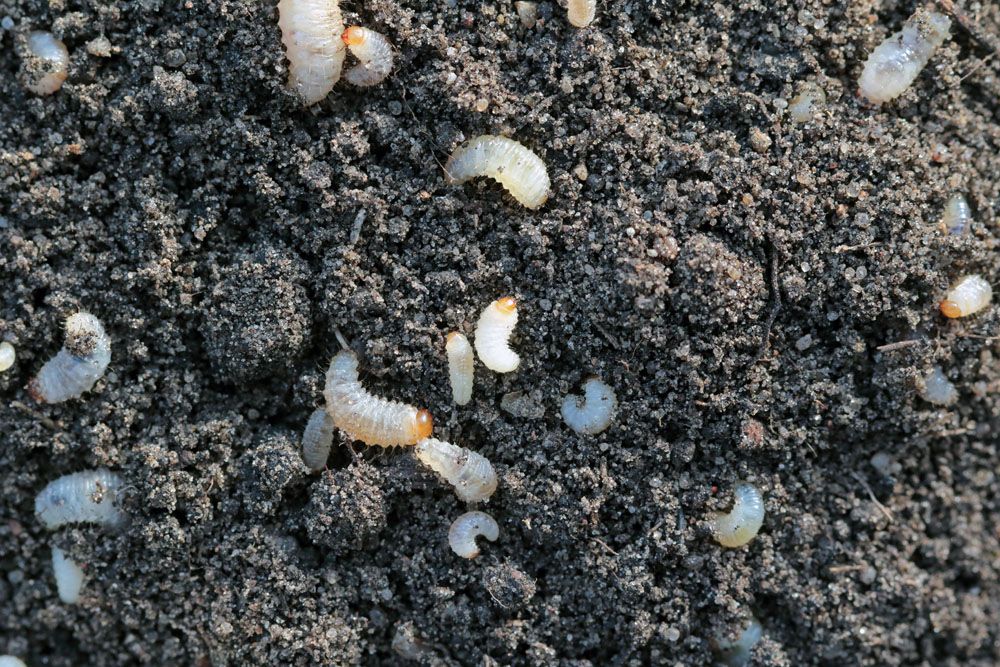
Root Weevil Larvae
Root weevils (Otiorhynchus ovatus)
Root weevils are plant pests that may be found both indoors and out. These devastating small insects will infiltrate a healthy plant’s root system and then consume it from the roots up. Identifying and eliminating root weevil in your garden and houseplants helps prevent unneeded harm to your plants.
Identification of Root Weevils:
Root weevils are tiny insects that are 1/4 to 1/3 inch in length. The coloration varies, but the most frequent species in Utah are black with gold specks (black vine weevil) or solid brown to black, glossy, or matte. If approached, adult weevils will frequently drop off plants to the ground. Bark beetle and billbug larvae are very identical in appearance. Lilac, strawberry, raspberry, privet, spruce, rose, and grape is the most commonly damaged plants. Canopy loss can be caused by larval larvae feeding on plant roots. These insects are nuisance pests that do not harm people, pets, or food goods when they are kept indoors.
Life cycle Root Weevils:
In moderate regions, adult root weevils can be found throughout the year. From May through September, most species have an abundance of adults. These species’ larvae spend the winter in the soil surrounding the roots. Adults of other species emerge in late summer and, in milder regions, may be active far into the winter and quite early in the spring. During the summer, the larvae of the fall emerging species are likely to be present. Each year, there is just one generation.
Damage:
Larvae feed on the roots of blackberry and raspberry plants, devouring tiny rootlets and destroying the bark and cortex of more extensive roots. Plants begin to wilt soon after feeding because the sources can no longer deliver moisture to the leaves. Weevil larvae that have pierced the bottom section of the plant’s crown are not uncommon. Adults eat the leaves and extract huge scallops from them. The presence of weevils is indicated by such leaf damage, although it is not economically detrimental to the plants.
Control:
It is possible to eliminate the root weevil. Purchasing parasitic nematodes or predatory beetles to track down the weevils are two organic root weevil management options. You may also handpick the adults off the plant when they are feeding late at night. Because weevils are drawn to wetness, a shallow pan of water may be left out overnight, and the weevils will crawl into it and drown.
Biological control:
Some root weevil species have produced at least two parasitic tachinid flies and one done on a various wasp. Shredded oak leaves were placed under plants to encourage ground-feeding birds, and this provided adequate control. When used as a drench as directed on the label, beneficial nematodes have demonstrated some success in reducing larvae. Beneficial parasitic nematodes should be placed in the root zone where weevil larvae are present; the soil must be wet, and the temperature must be above 55°F. Nematodes can be found at various garden and nursery stores, as well as by mail order.
Cultural control:
Root weevil damage to landscape plants appears to be inconsistent: physical and chemical properties of plants species, species, and cultivars appear to determine sun/shade influences, host, and cultivar preferences. Root weevils might be particularly vulnerable or resistant to specific plant varieties. Before planting, overwintering larvae can be eliminated by cultivating the soil in April and May. Because tiny grains are not known for root weevils, use a cereal cover crop to reduce weevil populations. When adults are located, handpick them.
